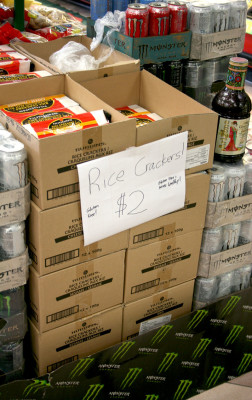STORY AND PHOTO BY ADAM BUCK

You may have recently seen it in multiple restaurants and grocery stores. You’ve probably heard it more over the past few years than ever before.
What does it mean for a food to be “gluten free” and why has it become so commonplace?
Gluten is simply the sticky binding protein found in wheat and similar grains, such as rye and barley. It’s the elasticity in bread and dough that provides that chewy quality. But for certain people, it can be something more menacing.
Wheat gluten generally only presents health issues to people with allergies, a wheat intolerance, or celiac disease.
“For the general public who don’t have one of those three conditions, wheat shouldn’t be a problem,” says Oakville based naturopathic doctor, Aoife Earls, “other than the fact that the carbohydrates would contribute to weight gain, if you eat a lot of it.”
As defined by Health Canada, “Celiac disease or gluten-sensitive enteropathy is an inherited condition triggered by the consumption of cereal grains containing ‘gluten’.”
When a celiac ingests these glutens, his or her immune system overreacts and attacks parts of the digestive system, limiting the absorption of some essential nutrients.
Typical celiac reactions in some patients include diarrhea, constipation, stomach pains and headaches.
Earls lived with undiagnosed celiac disease for about 10 years, mostly experiencing dermatitis as a symptom.
“Most of us with celiac disease know right away,” Earls said, noting how severe and immediate the discomfort can be.
But gluten isn’t always the culprit, according to naturopathic doctor Nyla Jiwani, who works with the Oakville Naturopathic Wellness Centre.
“We test people’s food sensitivities and intolerances, and I do find most people tend to be either allergic or sensitive to wheat, but not its gluten,” said Jiwani, pointing to the fact that most people feel better after removing gluten, including wheat, from their diets.
She also asserts wheat has changed over the years.
“Back in the day, wheat was a healthy grain and it actually had a lot of protein,” explained Jiwani.
“Whereas now, it’s so depleted of protein and it is more starch. It’s not that wheat is bad, it’s what’s happened to wheat over time.”
She added that there are potential problems with too much of some common alternatives, such as corn, which is often genetically modified. People can also miss out on healthy grains and limit the diversity of their diets while avoiding gluten.
“I feel like ‘gluten-free’ has become a little bit of a fad, in a sense,” she continued. “I believe a lot of this trend is weight loss.”
Fads aren’t always bad, though. Jiwani appreciates the increased awareness and food selection that have come with this growing topic of discussion, stating it’s become easier for people with major dietary restrictions to buy food.
“There’s a large majority of people that can be affected by wheat and gluten,” said Jiwani. “People have to take the step to figure out what’s best for their bodies. They need to empower themselves by taking charge of their health and being more preventative.”
